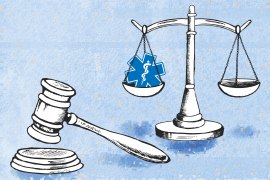Number of Couples in Which Only One Person Is HIV-Positive Increases in Uganda, Survey Finds
The number of couples in which only one person is HIV-positive -- a situation known as serodiscordance -- is increasing in Uganda, according to a survey released last week, Uganda's Monitor reports. According to the "HIV/AIDS Sero-Behavioural Survey (2004-2005)" -- which included responses from 4,000 cohabitating couples -- serodiscordance has increased from a previous estimate of 4.8% to 5%. In 3% of the cohabitating couples, the male partner was HIV-positive and the female partner was not. In 2% of the cohabitating couples, the female partner was HIV-positive and the male partner was not, the survey finds. In addition, at least 3% of couples included two HIV-positive partners, the survey finds. Serodiscordant couples are more common in urban areas and among polygamous couples, according to the survey. The findings represent "an unmet HIV prevention need for the country," the report says, adding, "This is because the vast majority of these cohabit[at]ing couples do not mutually know their HIV status and therefore are not empowered to take action to prevent further spread of the disease." Sam Okware, the Ministry of Health's commissioner for community, said the reason for the increase in serodiscordant couples is unknown, but he said it might be connected to the growing use of antiretroviral drugs. Okware also said HIV/AIDS advocates have not yet crafted effective HIV prevention campaigns aimed at serodiscordant couples. "It is something we have to address quickly because this friendly fire infection is very dangerous to our HIV control measures," he said. Alex Apio, the health ministry's assistant commissioner for national diseases control, said the findings highlight the need for couples to use condoms. Experts also say abstinence and the ending of serodiscordant relationships should be used to prevent HIV transmission in serodiscordant couples (Nyanzi, Monitor, 6/27).
This is part of the Morning Briefing, a summary of health policy coverage from major news organizations. Sign up for an email subscription.





